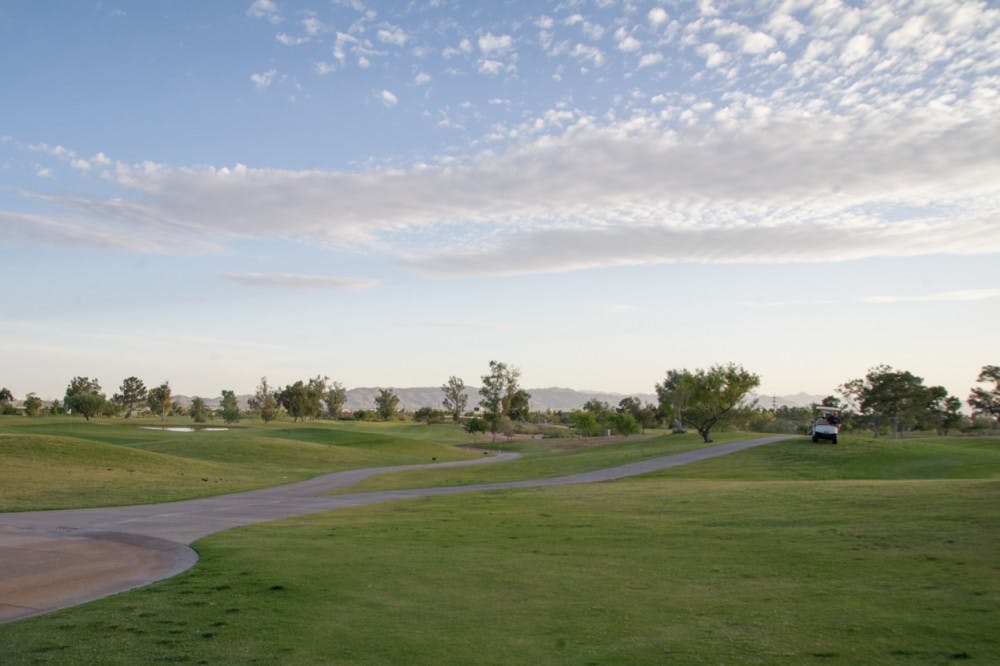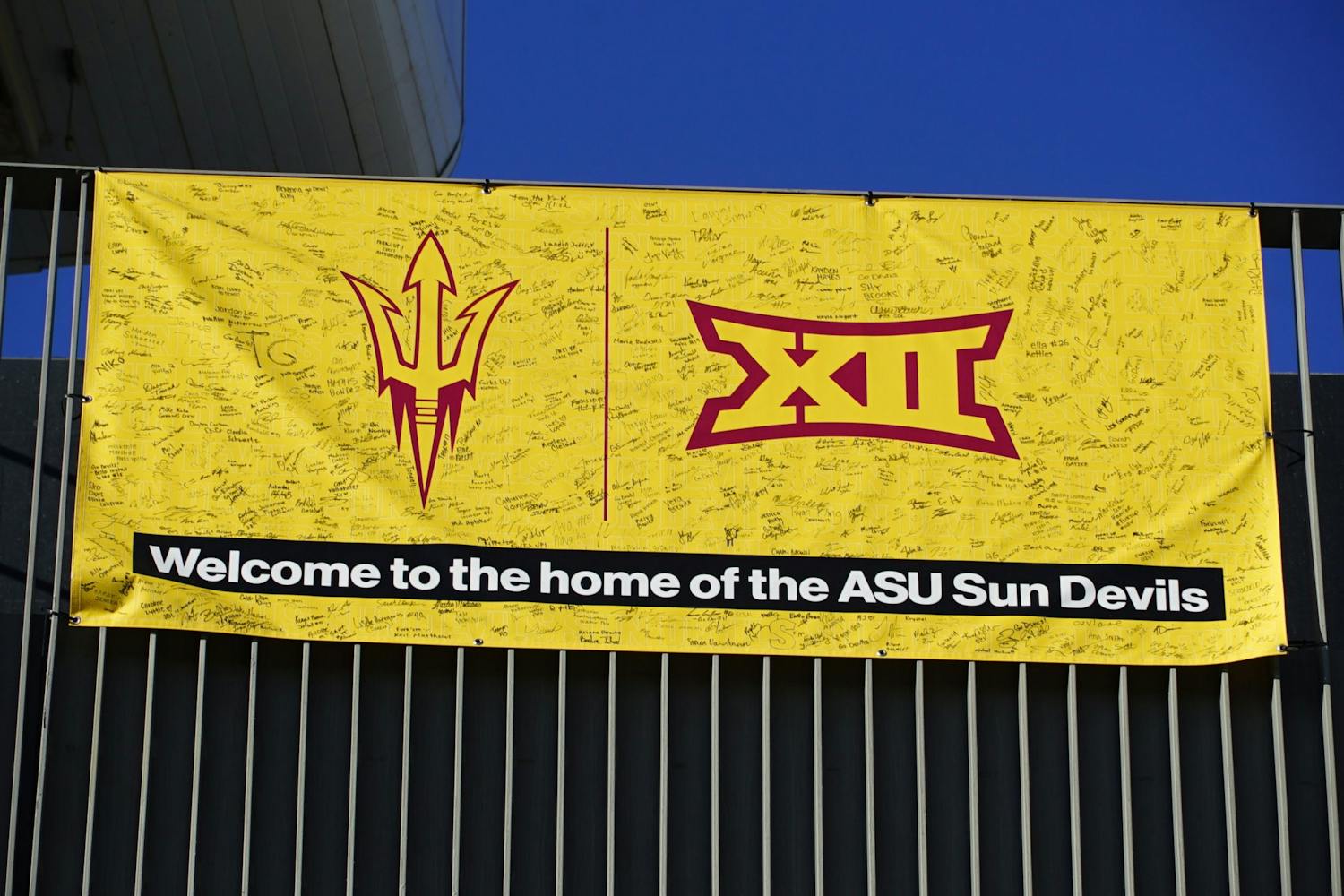As the ASU collegiate golf season begins to wind down, the rumors have begun to swirl on whether or not this will be the last we see of long-time University host ASU Karsten Golf Course.
While we do not know the approximate timetable for this shift, we do know that Karsten's days are numbered with each passing golf season.
On May 7, 2014, Phoenix City Council voted in favor of ASU acting as the primary operator of the Papago Golf Facility. The agreement in principle was first reported by Tim Gallen of the Phoenix Business Journal, who wrote that, "ASU will construct a new clubhouse for the course within three years, and use the course for up to two NCAA golf tournaments a year, a fundraising event and one Pac-12 men's and women's tournament."
Located 11 miles away from the ASU Tempe campus, the partnership with the city of Phoenix and Papago Golf Course will be the second such partnership that ASU has with Phoenix (the first of which being ASU baseball and Phoenix Municipal Stadium).
In 2008, Papago Golf course underwent a $5.8 million renovation process in an effort to rejuvenate the course and its facilities. This included lengthening of the course, removing a number of trees, filling many of the bunkers with fresh sand as well as adding a few new bunkers.
All of these changes were in an effort to increase the challenge given to the players as well as enhancing the views and sights of the surrounding Papago Park.
While the course currently lacks a proper clubhouse, it does hold two distinct advantages over that of Karsten.
Length
At its longest tee boxes, the ASU Karsten Golf Course plays a tick over 7000 yards (7002 yards to be exact) while Papago boasts a lengthy 7333 yard track.
Here are a couple of the lengthier holes at Papago:
| Longest Par 3s | Longest Par 4s | Longest Par 5s |
| Hole 8: 253 yards | Hole 3: 467 yards | Hole 15: 585 yards |
| Hole 17: 243 yards | Hole 18: 464 yards | Hole 1: 561 yards |
| Hole 4: 233 yards | Hole 7: 457 yards | Hole: 9: 542 yards |
The course's signature holes are the par-3 11th hole and the par-5 ninth hole. Playing 542 yards from the back tees, the par-5 9th hole appears straight away at first but soon shows its teeth as you make your way closer to the green.
Three bunkers form a triangle in the center of the fairway to show an ideal landing spot. The player has the option of trying to skirt the drive past the trio of bunkers down the center of the fairway, or laying up short of the trouble and making it a true three-shot par-5.
However, the drive may be the easiest part of the hole. Once they get past it, players must make the choice between going for the par-5 in two or laying up at a reasonable distance.
Either way, you must still contend with the large water hazard that begins approximately 166 yards from the green and runs adjacent to the hole. Anything on the right center of the fairway may very well funnel down into the lake as the hole slopes downward and to the right towards the water.
The green is approximately 28 yards from front to back as everything on the green rolls toward the back left portion of the putting surface.
After (hopefully) escaping that monster of a hole, you soon find yourself at the par-3 11th. The hole is 187 yards from the tee box, and the player must shoot at least 172 yards to avoid getting wet.
The surface of the green is relatively flat while the hole boasts only one bunker, which is intended to prey on golfers who over club and hit their tee shot long out of fear of hitting their ball into the water short of the green.
Layout
The second distinction Papago possesses over Karsten is that of its layout. Papago brings meaning to the term desert golf whereas Karsten plays links-style, which has holes running parallel to each other.
ASU holds invitationals for both genders annually. Both fields consist of the top golf programs in the country, many of whom are located on the east coast where the word 'desert' is not often used in their vocabulary.
Papago, being more of a desert course than Karsten, will pose much more of a challenge to the field, requiring them to dissect the course in a precise manner in order to achieve low scores. One errant shot may result in the player taking an unplayable lie from under a cactus or desert shrub.
While the Karsten golf course has played host to the many champions that have come through the ASU golf program, it seems as though its end is on the horizon; the memories that ASU Karsten has brought to the University won't soon be forgotten.
Related links:
ASU's Strom wins Pac-12 Golf Championship, breaks tournament scoring record
Inconsistency leads to ASU men's golf downfall at Western Intercollegiate
Reach the reporter at Braxton.Fox@asu.edu or follow @braxton_fox_II on Twitter.
Like State Press Sports on Facebook and follow @statepresssport on Twitter.




